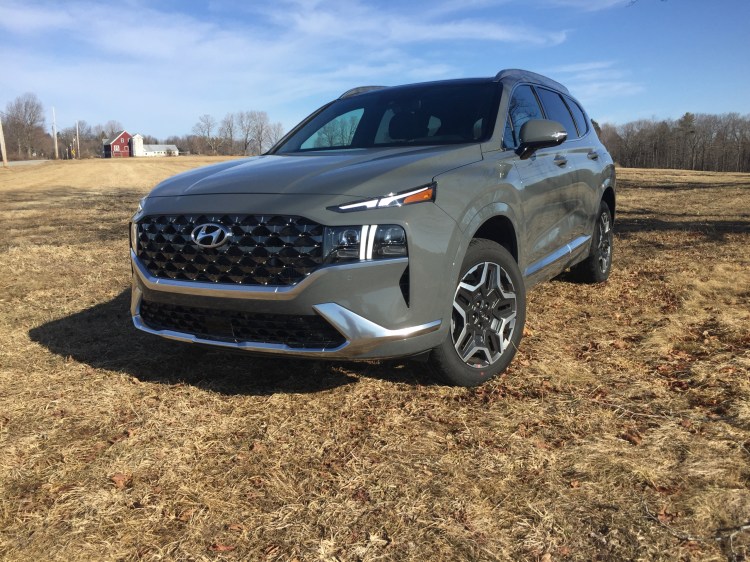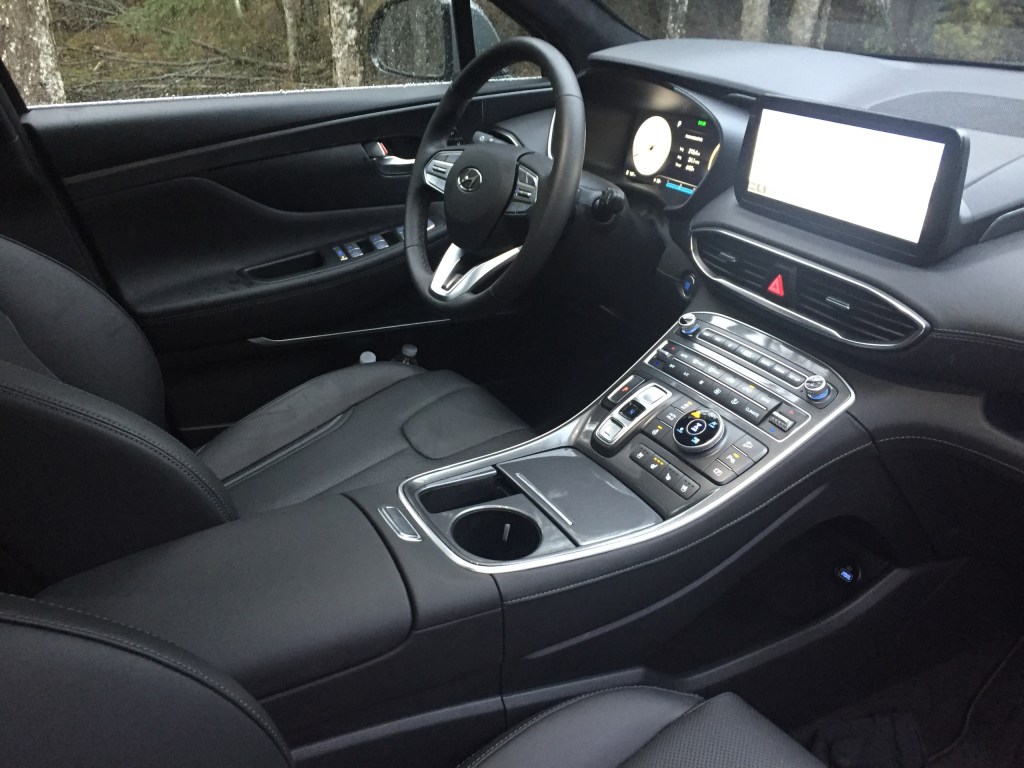The day that our top-of-the-line Santa Fe arrived, all refreshed for 2021, the Wall Street Journal featured a comprehensive report: Are Electric Cars Better for the Environment?
The short answer is yes, but digging into the details reveals some startling information about the total cost of building, buying and operating an EV versus a comparable internal combustion engine machine. It will take almost three years for the EV to become cheaper than an Initial Cost for Expenses (ICE) car, while ownership cost over 200,000 miles of operation is only 2% less for the EV. Carbon emissions however swing the tide in favor of the EV, by half over 200,000 miles of use according to the research from the University of Toronto, Consumer Reports, and compiled by the WSJ.
That is not the earth shattering financial advantage, or slam-dunk environmental edge, that pundits promote. As the ICE continues to improve—in efficiency, power delivery, and reliability, so will battery performance and price, so we are really in the first inning of what could well be an extra-inning ballgame.
This all relates to the latest Santa Fe on two fronts. Now solely a two-row, mid-size crossover (competing against the likes of the Ford Edge, Lexus RX, Jeep Grand Cherokee, Chevy Blazer, Nissan Murano and Honda Passport), the Santa Fe borrows all of the latest tech and convenience features buyers are loving in the 3-row Palisade crossover, all in a package with crisper driving dynamics, enhanced interior comfort, and more refined exterior styling.
Since crossovers are selling like hot dogs at the ballpark (you do remember those days?) Hyundai is investing in every size of its fledgling SUV lineup, creating greater ambience at every trim level, in every model, so that buyers will think Hyundai is their go-to source for all things automotive—which isn’t a stretch for a brand that has caught its primary rivals in every measurement of quality, presentation, and performance. Just ask Nissan and other makes where their buyers have been gravitating too.
Right now, the Santa Fe will come in four trim levels, (starting at $28,035 for SE front wheel drive, up to this loaded Calligraphy for $43,400) with a hybrid model in the wings, as well as a plug-in hybrid edition. Hyundai will also pony up a comparably sized Ioniq badged crossover to complement this series with a total EV powertrain. That’s called covering all of the bases.
Base power increases 6-hp, to 191-hp, while our sampled 277-hp 2.5-liter turbo-motor, backed with an 8-speed dual-clutch automatic, produced crisp acceleration and refined performance. The cabin is pleasantly subdued at all speeds, while the ease with which the Santa Fe responds to your right foot’s urges is a welcome evolution over some previous powertrains. EPA ratings are 21/28/24-mpg, with our week together settling in just ahead of the combined number.
The hybrid model will return over 30-mpg with 225-hp, seemingly the sweet spot in the line.
Absent the third row that its sibling the Kia Sorento features, the Santa Fe offers extra cargo room and greater second row passenger space. Tow ratings max out at 3,500 pounds.
At $43,000, you get the whole enchilada; heated/cooled quilted Nappa leather seating with memory, panoramic sunroof, heated rear seats and steering wheel, full-color heads-up display, Harman-Kardon audio, navigation, Apple/Android, front and rear parking assist, 360-degree surround view camera system, lane-watch cameras, LED lighting, and much more. Add the extensive Hyundai driving aids—lane assist, blind spot, Smart Cruise with Hands-free Lane Keeping, forward collision braking, blind-spot monitoring, rear cross-traffic sensing, H-TRAC AWD with selectable modes, plus rear occupant alert, and you have everything to impress. There is even a reminder to drive again, as forward traffic moves away from a stop light, and you don’t.
Hits include the color HID display, the sloping bank of push-buttons and controls easily accessed (and easily seen) by the driver on the console, the potent powertrain, the improved handling, the comfort of the interior, plus the ease and functionality of use of the technology built in. At this price, with that infamous warranty, the Santa Fe pounds its rivals with a huge value edge. A Lexus owner even said—why would I buy another compared to this?
Ground outs; the piano key transmission shifter seems slow (everyone’s do), Hyundai sticks with the single side exhaust outlet—stylistically odd now, but really all that is necessary, while selected functions like heated seats, wheel, and deactivated stop/start action, must be re-set with each start-up. Big deal breakers, eh.
Everybody’s latest renditions are better. The new Santa Fe succeeds at being better at more aspects of its performance than several rivals.
Send questions/comments to the editors.





Comments are no longer available on this story